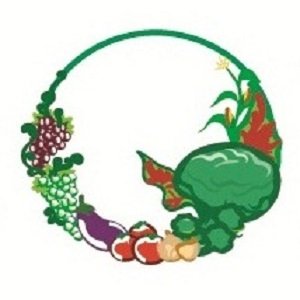🌱 CSA Winter Veggie Spotlight: Squash 🌱
Welcome to our Winter Veggie Spotlight!
(Squash is our highlight for this week, but wait until we highlight ALL 21+ vegetables and fruits...maybe not all 21+)
Today, we're diving into the world of squash—a true star of the cold season. Whether you're roasting it, mashing it, or adding it to a cozy soup, squash is a fantastic addition to your winter meals. Let’s explore its origins, uses, and some fun facts!
🥒 Origins of Squash
Squash has been cultivated for thousands of years, originally domesticated in Central and South America. The word "squash" comes from the Narragansett Native American word "askutasquash," meaning "eaten raw or uncooked." Early squash varieties were grown primarily for their seeds rather than flesh. Today, they are grown worldwide and are a staple in many cuisines.
🌍 Where Squash Shines
Squash is incredibly popular in the United States, Mexico, and parts of Europe, especially Italy, where it features prominently in dishes like pasta, risotto, and soups. In North America, squash varieties like butternut, acorn, and delicata are beloved in winter recipes. The vegetable also holds a special place in Japanese cuisine, where kabocha squash is often enjoyed for its sweet, chestnut-like flavor.
🍽️ How to Use Squash
Squash is as versatile as it is delicious. Here are some ways to enjoy it:
Roasting: Cut squash into cubes, season with olive oil, salt, and spices, and roast until tender and caramelized. Perfect as a side dish or salad topping.
Soups: Puree roasted squash with vegetable broth, garlic, and herbs for a hearty, warming soup.
Stuffing: Hollow out an acorn or delicata squash, fill it with grains, vegetables, and cheese, and bake for a nutritious, all-in-one meal.
Baking: Use squash puree in bread, muffins, or pies for a natural sweetness and moisture boost.
🌱 Waste Not, Want Not: Using the Whole Squash
Seeds: Don’t toss those seeds! Clean and roast them with salt for a crunchy snack packed with protein and fiber.
Skin: Some squash skins are edible and delicious when roasted, like delicata and acorn squash. For tougher varieties, use the peels in homemade vegetable stock.
Pulp: The stringy bits can be used to flavor stocks or blended into soups for extra nutrients.
🕵️ Fun Facts About Squash
Winter squash is a fruit: Botanically, squash is a fruit because it contains seeds and develops from the flower of the plant.
Historical Significance: Squash was a staple in the diet of Native Americans long before European settlers arrived and was one of the “Three Sisters” crops along with corn and beans.
Ornamental Varieties: Some squash varieties, like decorative gourds, are grown primarily for their unique shapes and colors, making beautiful fall decorations.
🚫 Any Taboos?
Squash is generally well-loved, but there are a couple of things to note:
Cucurbitacin: Some squash, particularly those that are wild or improperly grown, may contain high levels of cucurbitacin, bitter compounds that can cause stomach discomfort. Always choose squash from reputable sources and avoid any with an unusually bitter taste.
Pregnancy Concerns: Some holistic traditions caution against consuming large amounts of certain types of squash during pregnancy due to potential effects on blood sugar levels, though there’s limited scientific evidence to support these claims.
📣 Join Our CSA for Fresh Squash!
There’s no better way to enjoy squash than straight from your local CSA. By supporting our farm, you’re not just getting the freshest produce—you’re also helping our community grow. Sign up today to get your share of this versatile winter gem!
Use code: thankyou24
Happy Eating!
The Featherstone Crew


